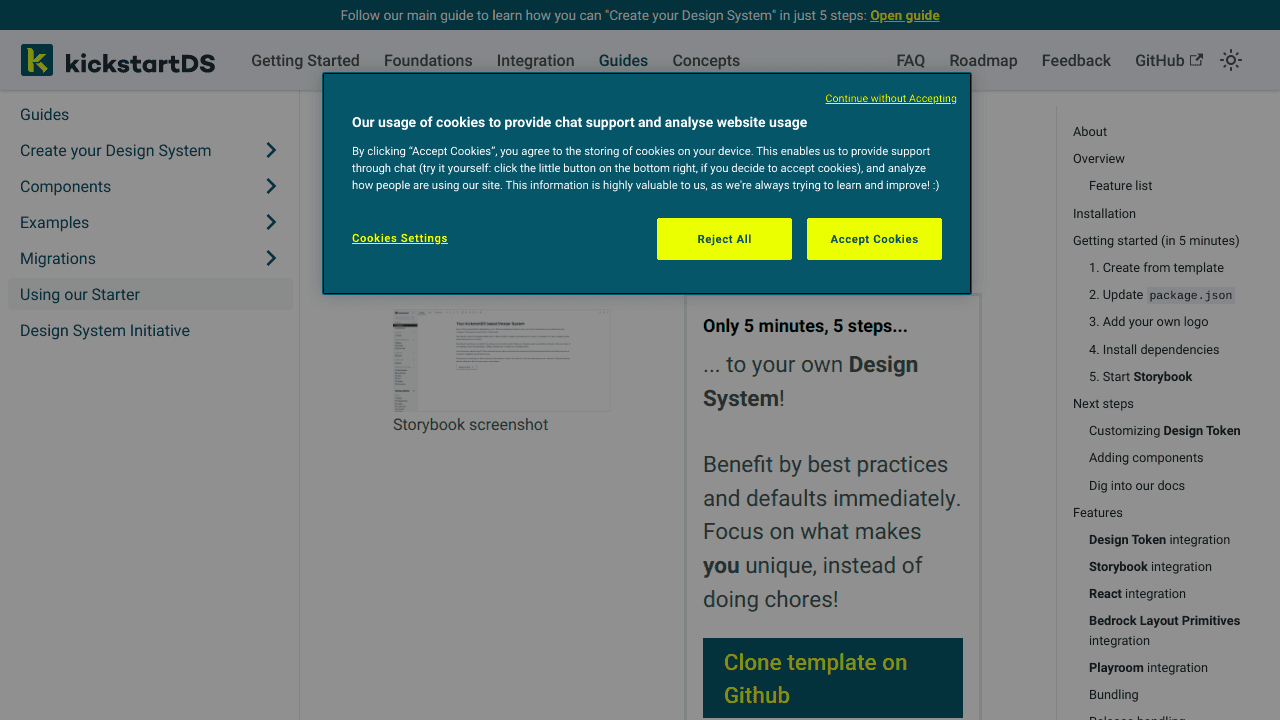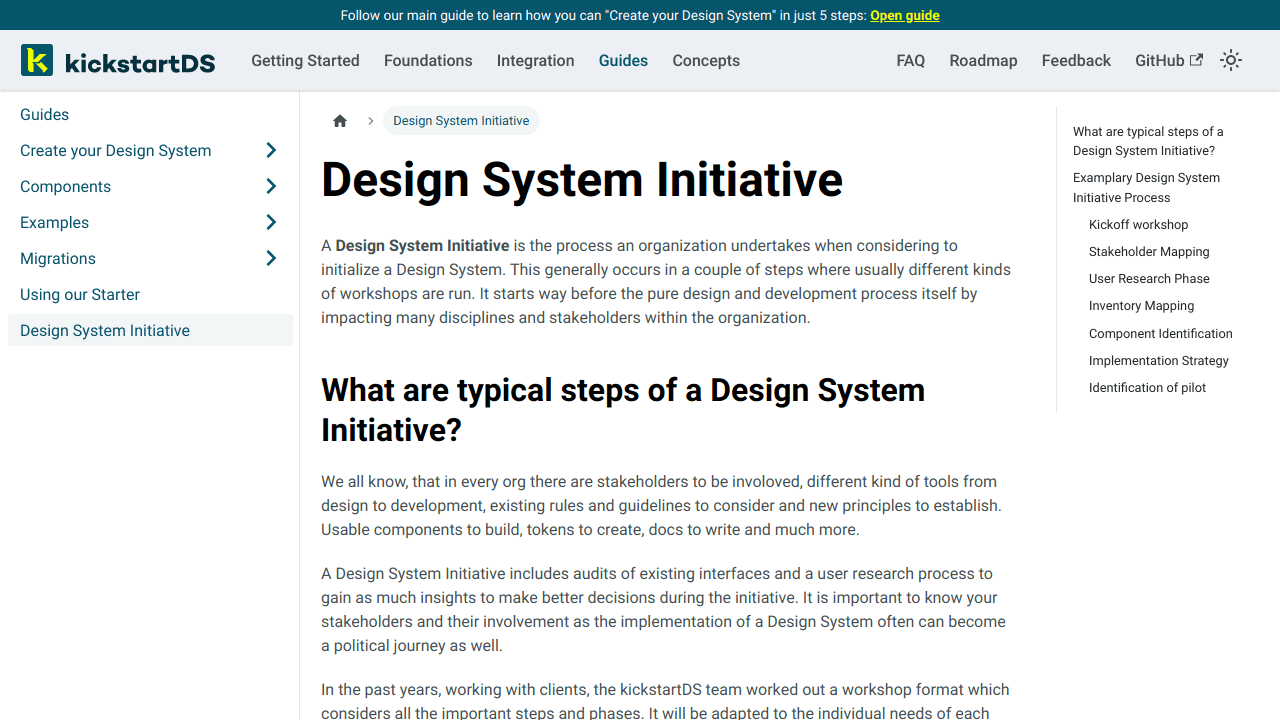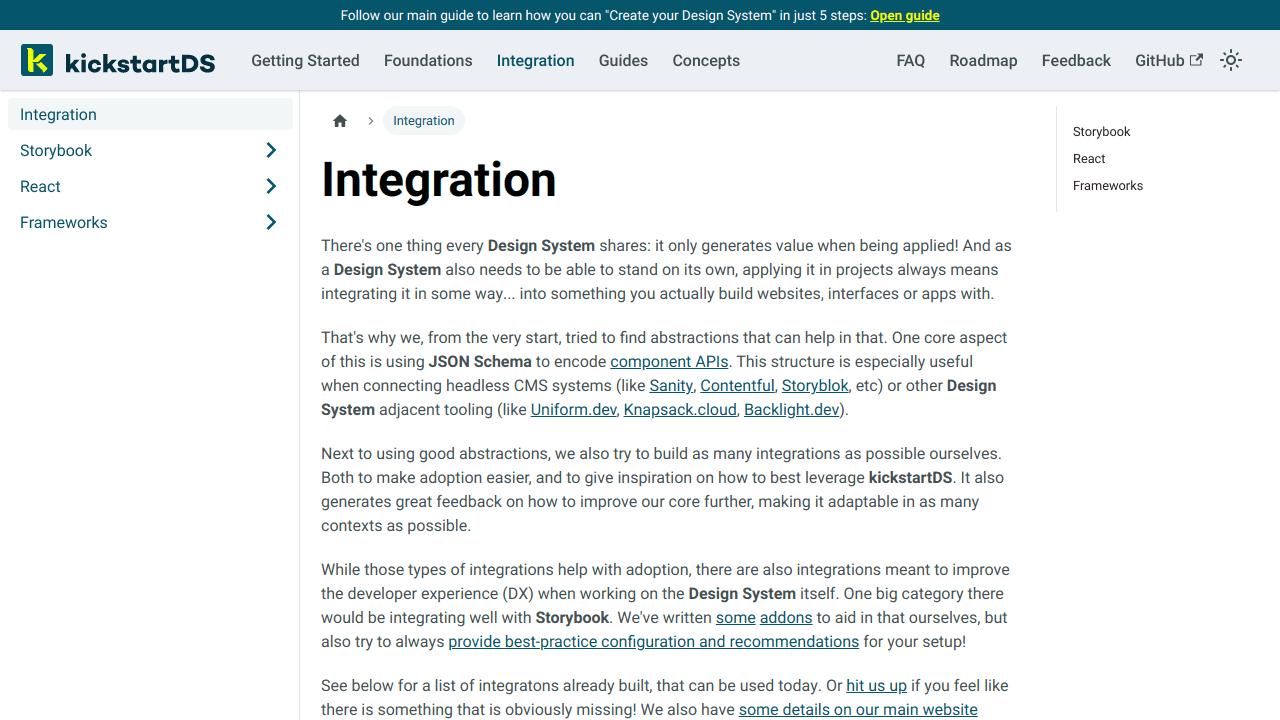Content tagged with: "COSS"
Explore more content related to this tag
Continue exploring kickstartDS...
Content directly related to kickstartDS
Finally, the wait is over … today we are very proud to announce the Open Source release of kickstartDS. It’s been roughly one year since we started to go to market as we published our website, and we
kickstartDS Design System Starter Only 5 minutes, 5 steps... ... to your own Design System! The selected components should be useful in every Design System by themselves, but they're specifically used
Design System Initiative A Design System Initiative is the process an organization undertakes when considering to initialize a Design System. A Design System Initiative includes audits of existing int
Integration There's one thing every Design System shares: it only generates value when being applied! Next to using good abstractions, we also try to build as many integrations as possible ourselves.
Definition for "COSS"
COSS stands for "Community Open Source Software". It is a type of software that is developed and maintained by a community of users and developers. COSS is a way for people to collaborate on projects and share their knowledge and expertise. It is an open source platform that allows users to create, modify, and share their own design systems. COSS is a great way to democratize design systems and make them accessible to everyone.
The blog post, "kickstartDS is Open Source now. Let’s start to democratize Design Systems today" [1] explains how COSS can be used to create and share design systems. It explains how COSS can be used to create a unified design language and how it can help to create a consistent user experience across different platforms. The blog post also explains how COSS can help to reduce the cost of creating and maintaining design systems.
The Appearance page [2] provides an overview of the features of COSS. It explains how COSS can be used to create and share design systems, how it can help to create a unified design language, and how it can help to reduce the cost of creating and maintaining design systems. The Appearance page also provides examples of how COSS can be used to create and share design systems.
The Showcase page [3] provides examples of how COSS can be used to create and share design systems. It provides examples of how COSS can be used to create a unified design language and how it can help to reduce the cost of creating and maintaining design systems. The Showcase page also provides examples of how COSS can be used to create and share design systems.
Overall, COSS is a great way to democratize design systems and make them accessible to everyone. It is an open source platform that allows users to create, modify, and share their own design systems. COSS can be used to create a unified design language and help to reduce the cost of creating and maintaining design systems.
[1] /blog/kickstartds-is-open-source-now-lets-start-to-democratize-design-systems-today [2] /appearance [3] /showcase
... or explore other related, external content
Sourced from our Design System concierge database
Reading Here’s a list of books that I’m currently reading and have read over the years. It's aimed at driven, successful, overachiever, workaholic types, and helps shine some serious light on the trap
Many thanks to Lucijan Blagonić for capturing these notes about the conversation! ( Prepending “provisional” to the decision disarms and empowers the team and helps us agree on enough so that we can m
Design Systems are for user interfaces We often talk about design systems as singular entities. “ A design system often contains many subsystems that make an interface tick: - UI components and varian






